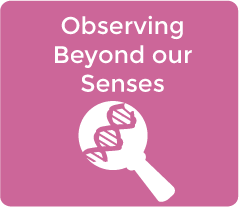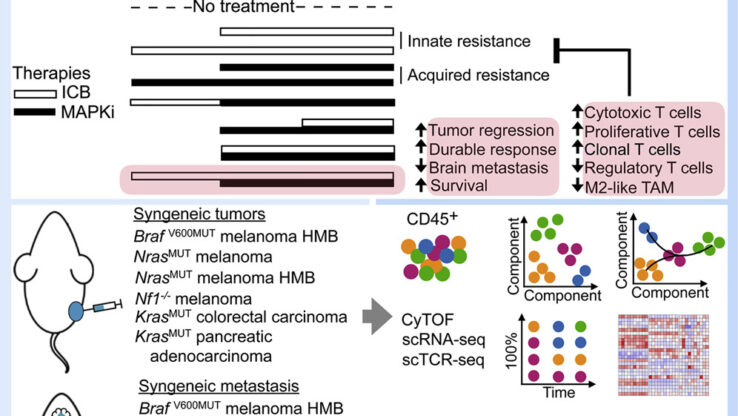Cool Finds and Resources – Ocean Acidification
 see.isbscience.org/ocean-acidification-module/cool-finds-and-resources-ocean-acidification/
see.isbscience.org/ocean-acidification-module/cool-finds-and-resources-ocean-acidification/

Below is a compilation of general resources on ocean acidification and systems level studies. Some of these resources are directly used in this curriculum module, but most are for your reference. While we do not endorse all items listed below, they have been referred to us by educators. If you know of any other resources you would like to share please contact the team at Systems Education Experiences. For other news articles, please do not forget to view the Teacher Resource in Lesson 1 and for more general teacher and students resources, see Lesson 5b.
A collaborative, one-stop site for information on OA: http://ocean-acidification.net/ • NOAA’s PMEL Program lists and updates links to OA information: http://www.pmel.noaa.gov/co2/story/Links+to+OA+Information • NRDC's Interactive Ocean Acidification Hot Spot's Site: http://www.nrdc.org/oceans/acidification-hotspots/default.asp • AMAZING animation of atmospheric CO2 over time. A “Must See.” http://www.esrl.noaa.gov/gmd/ccgg/trends/history.html. Please see Lesson 2 and 5b for more information on how to use this resource. • Another terrific animation of global atmospheric CO2 over one year: https://www.youtube.com/watch?v=x1SgmFa0r04#t=177. This really helps visualize the connectedness of the Earth, the scale of the our CO2 emissions, and much more. • Jennifer, a Port Angeles teacher, recommends this for TEACHERS to see and then do these demos with their kids, not the right videos for students to watchhttp://www.youtube.com/watch?feature=endscreen&v=xuttOKcTPQs&NR=1 • Another good TEACHER resource (not recommended for a classroom of kids) - Andrew Dickson, Scripps Institute of Oceanography • Good resource on Climate Change and CO2/OA issues. Lots of “click-able” things to see and ways of building systems thinking skills.http://cosee.umaine.edu/climb/cmv/index.cfm#?id=6040 • Video to spark discussion: "At the End of the Line". Preview may be somewhat controversial. • While not addressing ocean acidification specifically, this animation tracking 62 years of global warming is worth a view: • This site is a terrific compendium of climate information and resources, which includes OA: http://climateinterpreter.org/. You can can click on resources and choose Ocean Acidification to filter results. • This Nature article provides a great example of how scientists come up with an index to assess the health and benefits of the global ocean:http://www.nature.com/nature/journal/v488/n7413/full/nature11397.html# • This site was recommended by one of our teachers, Megan, because it expains anthropogenic carbon dioxide clearly: http://www.skepticalscience.com/anthrocarbon-brief.html.
Carbon Footprint Calculator: NRDC Resources: In addition to our recommendation to use the Natural Resources Defense Council film, Acid Test: The Global Challenge in Lesson 3, we also suggest you check out other NRDC resources such as their curriculum kit: http://www.nrdc.org/oceans/acidification/aboutthefilm.asp The Habitable Planet: contains lessons and a simulation Narrated Animation by Prentice Hall: Connections to Careers and Stakeholders: Showing videos that serve multiple purposes is important. For example, you can highlight various stakeholders' perspectives and show career connections in short videos. This is especially important in Lessons 3 and 4 when we want to build student empathy and confidence for tackling these issues. Here is an example of a video that highlights Alaskan residents as people who rely on a pristine environment and shows interesting ocean acidification research job tasks: You can find the video here, or on the Alaska Ocean Acidification Network website. CIA website with fact book is very interesting resource that could allow students to explore their possible interest groups and could also be used in Lesson 6 as they prepare for their summit. https://www.cia.gov/library/publications/the-world-factbook/ Expertise LLC is a Seattle-based company that has developed a consumer resource center aimed at educating readers on various green technologies and strategies. Their guides may be helpful for students during Lesson 6 as they research products and technologies that can be used in an effort to decrease their carbon footprint. See this link for more information: http://www.expertise.com/green. A great, 10-minute video that highlights partnerships and collaboration as a means for solutions: https://www.youtube.com/watch?time_continue=50&v=2KLT9vFVOmc.
Shell Dissolution Lab/Activities: Diatom Lab Resources/Activities There is a great deal of public data available to help students plan their experiment. Here are a few good sites: Additional Climate Change Curriculum: • 9 Ready-to-use lessons, 5 readings and teacher support materials. There are a few good lessons that could link to ISB/Thaps: the one on Carbon Dioxide Trends, Carbon Footprint and What is Climate and How is it Changing? https://www.facingthefuture.org/Curriculum/PreviewandBuyCurriculum/tabid... • C-MORE Curriculum • EPA site has interactives, lessons and video. Click on a site on the map and go! • HI curriculum: http://www2.hawaii.edu/~himbed/forms/HIMB-Ocean-Acidification-Lab.pdf • For ELL: http://www.breakingnewsenglish.com/0911/091130-co2.html • A Colorado teacher and student recommend this site as a nice jumping off point for discussing both the causes of climate change and ways to prevent it: "Heating the Earth with Global Warming." • This resource highlights easy, quick things you can do around your house to become more energy efficient: https://bestfanreviews.com/energy-efficiency/ Thank you to everyone for their recommendations!
General Links
http://www.youtube.com/watch?v=kQMZfCKuFIQ&feature=related
http://cosee.umaine.edu/climb/oci/#ocean?cid=13
• This archived journal dedicated to ocean acidification is a terrific resource. For $10 you get good resource articles/reports and the documentary “A Sea Change” on DVD. The articles are on this website but the DVD is only available with the actual journal. https://tos.org/oceanography/issue/volume-22-issue-04
Available on 'Netflix' or for purchase at docurama.com
http://www.climatecentral.org/blogs/watch-62-years-of-global-warming-in-...Extra Resources for Lessons 2, 3, and 6
• Good for high school students. Students could do this calculator on their own, or the teacher could lead a “class estimate” discussion using a document camera: http://footprint-calculator.islandwood.org/
• A clearinghouse of several different footprint calculators from child-friendly to very detailed: http://www.mnn.com/earth-matters/climate-weather/stories/the-15-best-car...
• This one is the best but it requires students to bring information from home….their power bill, how much propane is used, vehicle gas mileage etc. This calculator would take an entire class period to do and then discuss: http://www.epa.gov/climatechange/ghgemissions/ind-calculator.html#c=wast...
http://www.learner.org/courses/envsci/interactives/carbon/index.php
http://www.sumanasinc.com/webcontent/animations/content/globalcarboncycl...Extra Experimentation Resources for Lessons 4-5
• InSTEP Florida Institute of Technology - http://www.instep.fit.edu instep@fit.edu. InSTEP doesn’t seem to have updated in the past two years, but we have left their information here on the off chance they bring their materials back online. See the C-MORE activities below for a classic shell dissolution in acid activity if you’re looking for one.
• 30 second time-lapse of a sand dollar dissolving in diluted vinegar. Cool!! http://www.youtube.com/watch?v=wbkWkFu0XgY
• The Plankton Chronicles: http://planktonchronicles.org is the home page for a collection of video shorts on plankton. They have a dedicated section on diatoms and one on sea urchin larvae which reinforces Virtual Urchin activity. They also have an overview of planktonic ecosystem athttp://www.ted.com/talks/the_secret_life_of_plankton.html
• Dr. David G. Mann. General Info about Diatoms—WOW!! So much info!! http://tolweb.org/Diatoms/21810
For a rubric for the inquiry lesson, something like this one at the Biology Corner could work well:http://www.biologycorner.com/worksheets/carbondioxide.html
• Northwest Association of Networked Ocean Observing Systems http://www.nanoos.org/ or specifically http://nvs.nanoos.org/Explorer
• Integrated Ocean Observing Systems: http://www.ioos.noaa.gov/, or specifically http://www.ioos.noaa.gov/catalog/welcome.html
• Also, see many other sites available in the formal Lessons 4-6 such as that found through NOAA (www.noaa.gov) and Eyes Over Puget Sound at WA State Department of Ecology (http://www.ecy.wa.gov/programs/eap/mar_wat/surface.html).
o http://cmore.soest.hawaii.edu/index.htm
o http://cmore.soest.hawaii.edu/education/teachers/science_kits/materials/...
o http://cmore.soest.hawaii.edu/education/teachers/science_kits/ocean_acid...
http://www.epa.gov/climatechange/kids/index.html
Prelab info at the beginning of this site is a nice reading piece for students, though may be difficult for some students to read.






